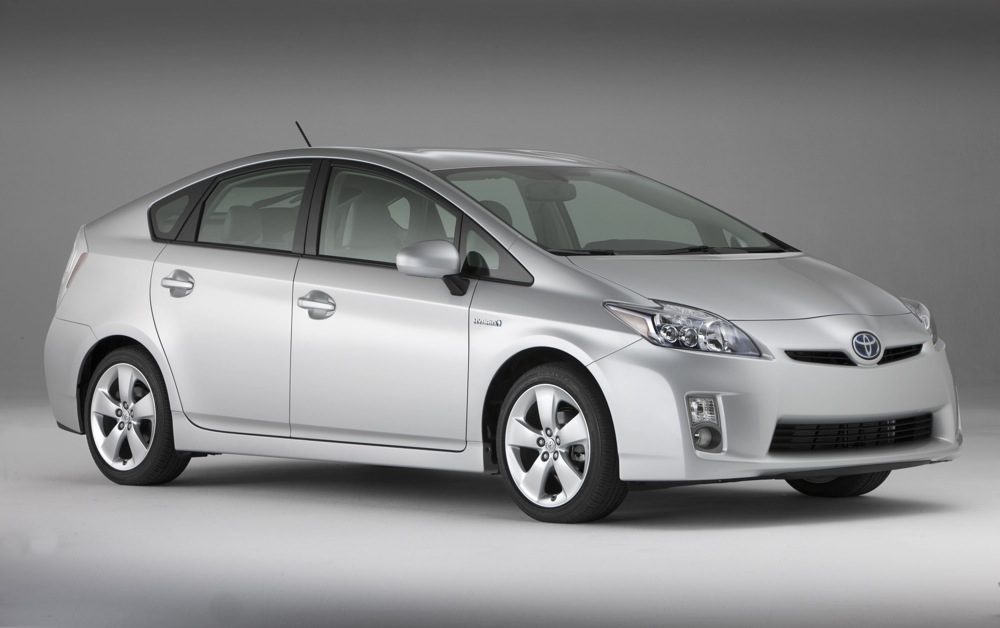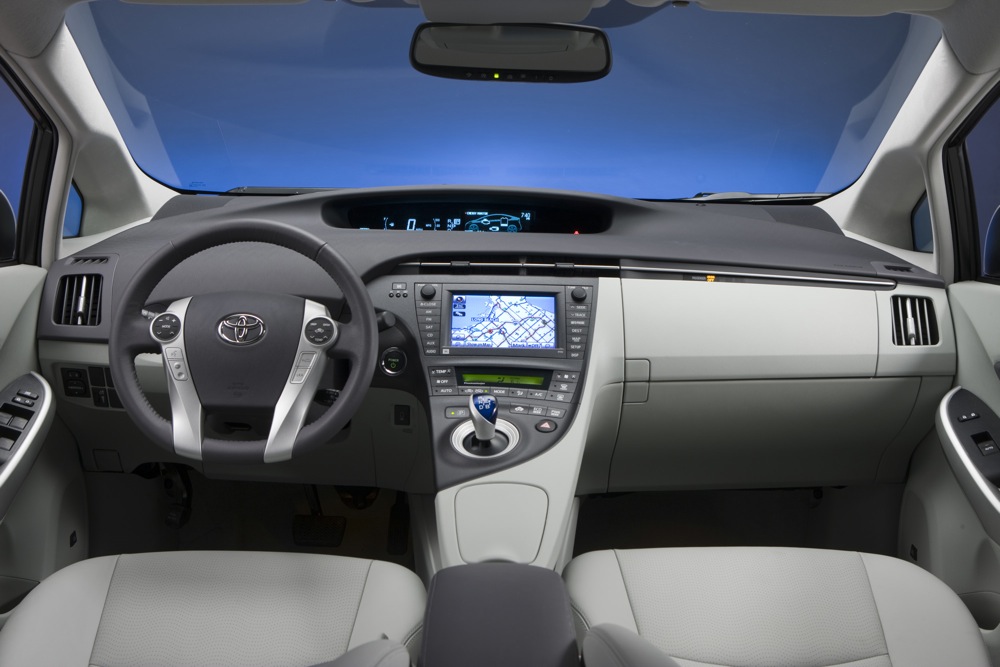
2010 Toyota Prius
We've gotten a whole lot of questions about the 2010 Toyota Prius this week. So we figured we should put together a Frequently Asked Questions list, with answers, before we dive into the nitty-gritty details of the new, bigger, better, bolder, and even-less-thirsty 2010 Prius.
(1) What's the bottom line on the car?
Toyota executives repeated several times that the new 2010 Prius is "evolutionary, not revolutionary," and we think that's entirely true. We've stuck to our first impressions: From the familiar shape to the 1 mile or so of low-speed electric running, it's a newer, nicer, better update on the 2004 model. But it won't stun the automotive world the way that car did.
(2) What are the main differences between the 2010 Toyota Prius and the previous (2004-2009) model?
The room inside is slightly larger in some dimensions, a hair smaller in a few. The interior is more sophisticated and uses nicer materials. The car offers a much wider array of electronic options, from laser adaptive cruise control to a solar moonroof that powers an interior cooling fan using solar power from roof-mounted photovaoltaic cells. A larger engine makes merging at speed safer and freeway cruising more relaxed. And, of course, the combined gas mileage rises to an even 50 miles per gallon from the previous 46 mpg.
(3) What's the new 2010 Toyota Prius like to drive?
It's a little more "normal," although it still signals its differences in large and small ways. But we liked the action of the electric steering (you can't really call it "feel"). Depending on driving mode (see next question), the performance ranged from perky to sedate--our choice. The handling is fine. And though one car we drove had a noticeable wind whistle, the next one didn't--giving credence to the warning in each car: This vehicle is a prototype and ... should not be regarded as representative of the final product since many details as well as fit, finish and assembly quality may not be up to production standards.
(4) How does it perform?
Actually, that's up to you. For the first time in the US, the 2010 Prius lets the driver select among three optional driving modes that differ from the standard tuning.
The first is Eco, which cuts down the acceleration a bit and boosts mileage a lot. Then there's Power mode, which does just the opposite--cutting your time to accelerate from 30 to 50 mph from 5.8 seconds down to 4.1 seconds. Finally, there's EV Mode, which makes the car run electric-only (under 26 mph) for as long as the battery holds out. (Europeans call this the "Cheating Husband button"!)
Push the Power mode, and you'll keep up with pretty much any traffic, at the expense of mileage that may dip to 35 or even 30 mpg. Leave it in Eco Mode, and you can easily push 60 mpg. If you don't change modes, the standard Prius is more sprightly than last year's. It's still not a hot rod, but you won't hold up traffic either.
(5) The economy's bad, gas is cheap, and I don't know if I really need a hybrid; will the 2010 Toyota Prius convince me?
That depends whether you think $2/gallon gasoline is the new norm, or an aberration that'll end sooner or later. The new 2010 Toyota Prius gets the best combined gas mileage of any car sold in the US today, and its closest competitors are much smaller inside, less well equipped, and just not as versatile.
We're biased toward Priuses here, so we think most people would benefit from driving one. As always, you need to decide for yourself. But Toyota believes that the latest 2010 Prius will expand its owners to those who just see it as a very good, very high-mileage car, never mind the hybrid. Which may be the best reason of all to buy one, right?

2010 Toyota Prius













